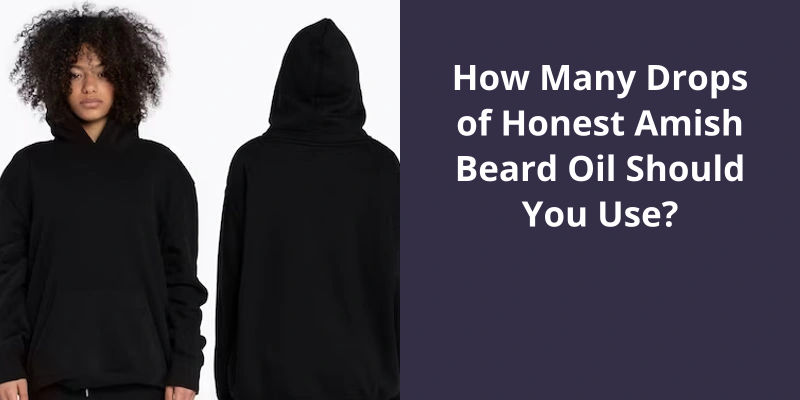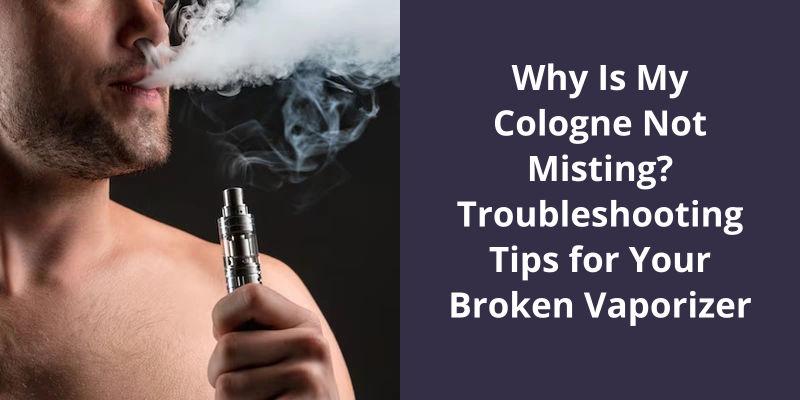When using Honest Amish Beard Oil, the quantity to use can be dependent on the length and thickness of your beard. However, a general rule of thumb is to start with 3-4 drops for a medium-length beard. For shorter beards, you might only need 1-2 drops, while longer, thicker beards may require 5-6 drops. Just make sure to thoroughly distribute the oil throughout your beard, from roots to ends, ensuring it reaches the skin underneath. Experiment to find the right amount for your beard.

How Much Peppermint Oil to Add to Beard Oil?
One of the most popular essential oils to add to beard oil is peppermint oil. Not only does it smell great, but it also provides a range of benefits for both the skin and hair. Peppermint oil is known for it’s cooling and refreshing properties, making it ideal for use on the face and neck. It can help to soothe dry and itchy skin, reduce inflammation, and promote hair growth.
Adding too much can lead to skin irritation, while adding too little may not provide the desired benefits. As a general rule of thumb, a dilution rate of between 1-2% is recommended. This means using 6-12 drops of peppermint oil for every 30ml of carrier oil.
These oils are non-comedogenic, meaning they won’t clog pores, and they provide nourishment and hydration for the skin and hair. They also help to spread the essential oil evenly throughout the beard, ensuring that every hair is coated.
You can also add other essential oils, such as lavender or tea tree oil, for added benefits. Shake well before use, and apply a small amount to your beard and skin, rubbing in gently.
By following the recommended dilution rate and using high-quality carrier oils, you can create a customized beard oil that suits your needs and preferences.
Benefits of Using Other Essential Oils in Beard Oil, Such as Lavender or Tea Tree Oil.
Using other essential oils in beard oil can provide benefits such as soothing skin irritation, preventing acne breakouts, and promoting hair growth. Lavender oil can improve blood circulation to hair follicles, while tea tree oil has antibacterial properties that can help keep the skin beneath the beard clean and healthy.
When it comes to applying beard balm, there are no one-size-fits-all guidelines. Since each beard is unique, the amount of beard balm or oil you use will depend on the length, size, and thickness of your facial hair. However, for starters, you can use 3 drops of beard oil in your palm or a fingertip-sized dollop of beard balm to keep your beard soft, shiny, and well-moisturized. So, what exactly is beard balm and how does it work? Let’s find out.
How Much Beard Balm Should I Use?
When it comes to using beard balm, it’s important to remember that less is more. If you use too much, it can leave your beard feeling greasy or heavy, which is never a good look. Instead, start with a small amount and work your way up as needed. A good rule of thumb is to start with a dime-sized amount and adjust as necessary. This allows you to fine-tune the amount based on your beards unique needs.
If you’ve a shorter beard, you won’t need as much product as someone with a longer, fuller beard. On the other hand, if you’ve a thick, coarse beard, you may need to use more product to ensure it gets the nourishment it needs.
It’s also worth noting that different beard balms have different consistencies. Some are thicker and heavier, while others are lighter and more easily absorbed into the hair follicles. This can affect how much product you need to use, as well as the best way to apply it. Experiment with different balms until you find one that works well with your beard and your personal preferences.
Pay attention to how your beard responds to the product, and adjust accordingly. With a little trial and error, youll soon find the perfect amount to give you the soft, smooth, and well-groomed beard youve always wanted. Remember that every beard is unique, so what works for someone else may not work for you – but with a little patience and experimentation, youll find the perfect solution for your beard.
It’s important to know just how much beard oil to use, especially when dealing with stubble. Using too much can lead to greasiness, while using too little may not provide the needed moisture. So, how much beard oil should you use on stubble? Keep reading to find out.
How Much Beard Oil to Use on Stubble?
Beard oil has become an essential product for anyone who wants to grow and maintain a healthy beard. It not only moisturizes the skin underneath your beard, but also helps to keep your facial hair looking healthy, shiny, and well-groomed. One of the common questions that people have is how much beard oil to use on stubble. The answer is simple- a little bit of beard oil goes a long way.
When applying beard oil to stubble, it’s essential to massage it in thoroughly. You should also apply the oil directly after you shower, when your pores are open and your skin is most receptive to absorbing the oil.
To maintain a healthy beard, it’s generally recommended to use beard oil 3 to 4 times a week.
Massage the oil in thoroughly and use it directly after you shower for best results.
Tips on Choosing the Best Beard Oil for Stubble
When looking for the best beard oil for stubble, there are a few things to consider. First, check the ingredients to ensure they’re natural and suited for sensitive skin. Look for oils that won’t leave a greasy residue and have a pleasant scent. It’s best to choose an oil that’s moisturizing properties and promotes healthy beard growth. Don’t forget to read reviews and check the brand’s reputation before making a purchase.
When it comes to caring for your facial hair, essential oils can be a game-changer. In addition to nourishing your beard, they can provide a variety of benefits like promoting growth, reducing inflammation, and even fighting off acne. To help you find the best oil for your beard, we’ve listed some popular essential oils to incorporate into your routine.
What Essential Oils to Add to Beard Oil?
When it comes to maintaining a healthy and impressive beard, essential oils can play a crucial role.
One of the most popular essential oils for beards is lavender oil. It’s widely known for it’s calming properties and soothing effects on the skin. When combined with carrier oil, lavender oil can make your beard soft and supple while promoting relaxation and reducing stress.
It’s known for it’s cooling and refreshing sensation when applied to the skin. Peppermint oil can help stimulate beard growth while also providing relief from skin irritation and inflammation.
Rosemary oil is also beneficial for beard growth and maintenance. It contains antioxidants that help soothe the skin and stimulate hair follicles.
Cedarwood oil is an excellent essential oil for promoting healthy beard growth. It’s antifungal and antibacterial properties that help prevent dandruff and other scalp conditions that can hinder beard growth.
Tea tree oil is another popular essential oil for beard care. It helps cleanse the skin, unclog pores, and promote healthy hair growth.
Sandalwood oil is a valuable addition to any beard oil blend. It’s a woody and earthy scent that’s both masculine and soothing.
It’s a warm and nutty aroma that promotes relaxation and helps alleviate stress. Clary sage oil also has antiseptic properties that work well for beards prone to skin irritation and inflammation.
Ultimately, the choice of essential oils for your beard oil blend depends on your personal preference and the specific needs of your beard.
Conclusion
In conclusion, using Honest Amish beard oil is a simple and effective way to nourish and maintain your facial hair. Applying just 3-4 drops of beard oil into your hands and massaging it into your beard and skin can help to prevent your beard from drying out, promote healthy growth, and keep your facial hair looking soft and shiny.





